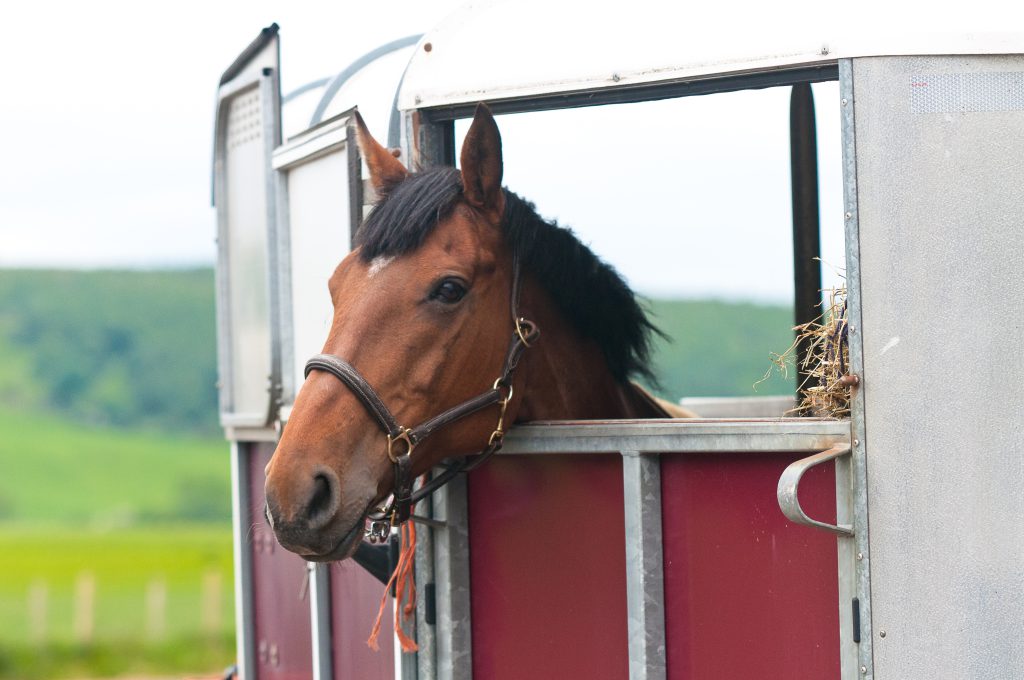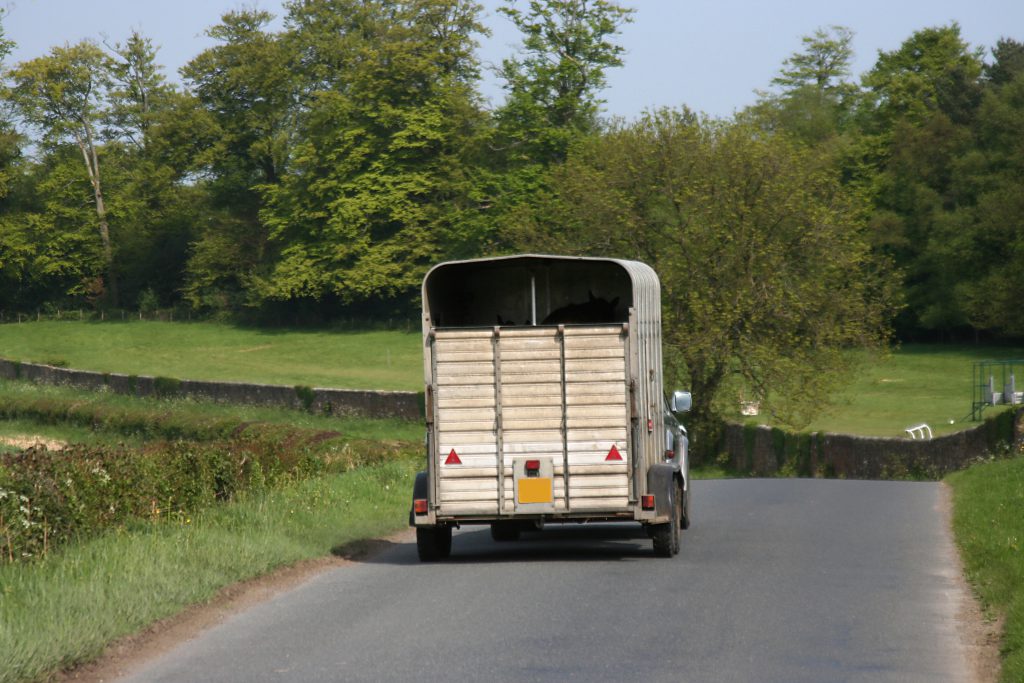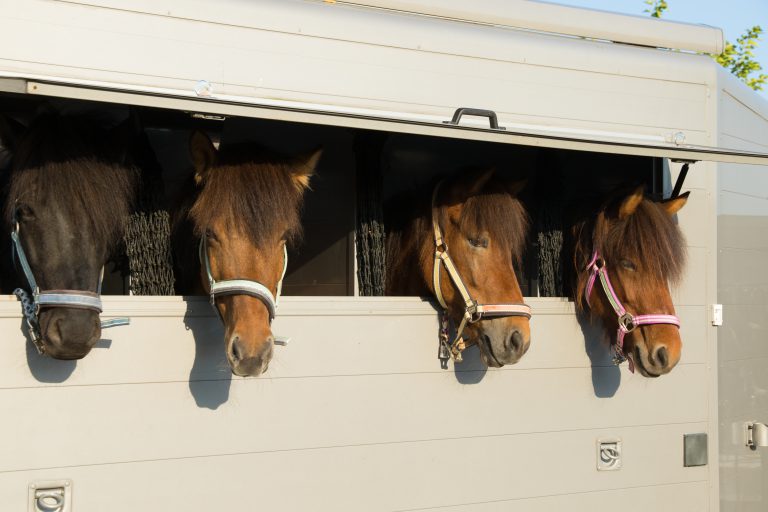Horsebox breakdown cover is there to protect horse owners when the unexpected happens. Whether you have a minor or major breakdown, horsebox breakdown cover is there, along with seamless service, to get you out of a sticky situation.
On the roads, drivers transporting horses carry a weight of around 3 tonnes and could drive up to speeds of 60 miles per hour, so extra caution is vital to ensure accidents don’t occur. Sometimes though, breakdowns and accidents are out of our control, and this is why purchasing horsebox breakdown cover is highly recommended.
You may have equine insurance and horsebox breakdown cover already, but what do you do at the very moment your horsebox breaks downs? How can you prepare yourself?
Whilst we hope this never happens to you, read on for some tips on how to deal with a horsebox breakdown.
- Look after your vehicle and horsebox
- Preparation is key
- Stop somewhere safe
- Keep calm
- Call for help
- Summary
- FAQs
1. Pre-minimise chances of horsebox breakdown

As always, prevention is better than cure. Whether you are driving a towing vehicle or a horsebox, keeping everything well maintained will help reduce the likelihood of anything going wrong.
Is your vehicle safe and equipped transport your horse? Making sure your vehicle is both MOT certified and mechanically secure means there’s less chance you’ll end up needing horsebox recovery. Simple tyre, brakes or oil checks are safety procedures you can complete from your own home.
Double-checking your vehicle is safe to drive may feel tedious and unnecessary, but it could also be the difference between a smooth or dangerous drive.
Also, for long-distance drives, why not take extra stops? Taking rests mid-journey will make sure you, your horse and your vehicle are not over-worked.
2. Preparation is key
As the saying goes, preparation is the key to success. Making sure that you are prepared for all eventualities on your journey could save you a lot of panicking and stress if an accident does occur.
Before you set off, it’s vital to ensure to that you have saved all your emergency numbers in your phone, including a family contact – and that of your insurance provider or broker. It’s also important that you always have your policy documents to hand, particularly detailing your equine insurance and additional horsebox breakdown cover so you have all the information you need when you call for assistance that very same day.
Whether your horse is generally a happy traveller or not, a long wait for roadside assistance – and then potentially noisy roadside repairs – could prove unsettling for them.
Always carry food and water with you, for both you and your horse, along with human and equine first aid kits. Pack a bridle and extra lunge line in case you need to let your horse stretch its legs (only if you’ve broken down in a safe, rural spot), and make sure you’re equipped for the weather: a sponge and bucket to cool off your horse in hot weather, and a warm rug for cold conditions.
3. Stop somewhere safe

When and where you breakdown are not predictable, but it is important that you give yourself the best chance of a smooth horsebox recovery by stopping somewhere safe. The very moment you feel your vehicle or horsebox breakdown, switch your hazard lights on and look to divert yourself away from oncoming traffic as best you can.
While you won’t always be able to choose exactly where you stop, try to move as far over to the left as possible, or ideally into a layby or quiet side road. Keep your hazard lights on and get out of the vehicle yourself, leaving by the doors on the side away from the traffic. Wear the reflective vest you take riding with you, to keep yourself as visible as possible, especially if you break down when it is dark.
The Equine Rescue Services (ERS) also recommends that you should place a warning triangle around 45 metres behind your vehicle to allow drivers approaching you to react as soon as possible. Do not do this on the motorway, however, and refrain from making repairs yourself near major roads with busy traffic.
It is important that you remain with your vehicle until help arrives, and this includes keeping your horse in the horsebox until it is safe to do otherwise. If you’re on the motorway and you could pose a danger to traffic, call the Police or Highways Agency on 999 or 112.
Be ready with your horsebox breakdown cover documents so you have everything you need for before roadside assistance arrives.
4. Keep calm
It’s natural to feel panicky and a little shaken up when a breakdown happens, but you should always try to remain calm. Keep as calm and relaxed as possible to ensure you do not make any uncalculated or potentially harmful decisions.
Your horse will benefit from you staying calm too! A horse could pick up on your anxiety and may also start to panic, which will only make everything even more stressful. Make sure they have fresh air and enough food and water in the horsebox or lorry whilst you wait for help, but still don’t let them out of the vehicle or box if you can avoid it.
5. Call for help

Now that you have taken control of the situation, you are ready to call for help, but only if it is safe to do so.
Getting the right horsebox breakdown cover is essential if you’re travelling with horses, as it means that help is just a phone call away.
Should the worst happen, and you have horsebox breakdown cover with us already, give our specialist horsebox team a call for assistance on 01296 398 398. If it’s out of hours, you can also call the following horsebox breakdown number: 0300 123 1075.
Once you’re on the phone to member of the team, listen to instructions and do your best to provide as much relevant information as possible to make the rescue process and roadside repair as smooth and simple as possible. Efficient service and help will then be on its way – no claim is too much trouble!
Summary
All in all, the keys to navigating a horsebox breakdown successful are composure and preparation. Keeping your calm as a horse owner and being prepared for any eventuality will make such a difference, allowing yourself to be equipped and, therefore, able to prevent an accident being any worse than it could already be.
For peace of mind when you’re travelling with your horse, take a look at our specialist horsebox breakdown cover and equine insurance on the A-Plan website.
FAQs
Do I need equine insurance?
Although, legally, horse insurance is not compulsory, it is highly recommended. Owning a horse is a significant financial commitment, so keeping yourself covered in case of any setbacks is important. A-Plan’s equine insurance policy will cover you for veterinary fees and public liability. Horsebox breakdown insurance is also available to be added on to your equine policy.
Do I need horsebox insurance to drive a horsebox or tow a horse trailer?
Horsebox breakdown insurance is not a legal requirement for drivers of horseboxes or vehicles which tow a horse trailer. However, to ensure you and your horses are safe, in case your vehicle breaks, is damaged or stolen, it is highly recommended to invest in horsebox breakdown cover.
What does horsebox breakdown insurance cover for?
Horsebox breakdown insurance can be fully comprehensive depending on what you want from your policy. If you choose us as your insurer prior to an incident, we can provide you with a policy which can include:
- Roadside assistance & home breakdowns.
- Horsebox recovery.
- Transport for horses or stabling costs.
- UK breakdown and recovery service.
Our horsebox breakdown insurance can also provide cover for drivers of any age and allow claims for accidents, fire damage, theft and vandalism.
How much is horsebox breakdown cover?
Horsebox breakdown cover can vary in price depending on a range of factors. The age, value, weight and type of your horsebox will all impact how much a policy will cost. The amount of miles your horsebox has driven and any previous claims you’ve made previously could also affect the cost.

